
surfresearch.com.au
john witzig : byron bay, 1963.
john witzig : byron bay, 1963.
|
|
|
|
|
|
 |
surfresearch.com.au
john witzig : byron bay, 1963. |
| John Witzig : Byron Bay |
Pipeline |
Midget Farrelly |
John Kelly's Hydroplane | Advertising |
| DESPITE a
somewhat intolerant attitude by some local
officials, Byron Bay, on the upper NSW north coast
, has become one of the most popular beaches on
the east coast of Australia. The unusual beach formation facing north, stretching from east to west, admirably suits the south winds which frequently fan the surf into a series of strong, well-shaped rolling waves. It's an ideal board surf. Palm Valley beach at Byron Bays features a real long ride and the small to medium waves at the Valley carry some of the best "hot dogging" waves in the country. The take-off point at the Valley is sheltered behind a rock formation and the ride ends nearly half a mile Page 7 away near the shallow sand banks fringing the beach. Watego's the eastern-most beach in Australia sports a different type of wave. Watego's normal waves are much more critical and often much shorter than its neighbouring beach. The take-oft point at Watego's varies according to the tides but the ride invariably ends in the western-most corner, often in front of the rocks where a wipe out is disastrous. The south wind blows directly off-shore at Watergo's and is funnelled down from the lighthouse. |
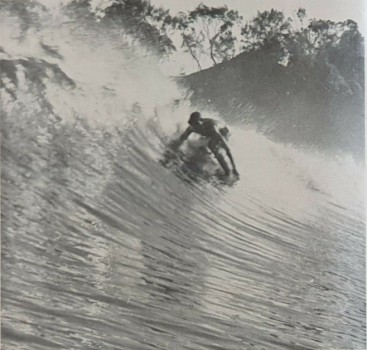 Definitely
an "all-time" great surfing shot
taken of Terry Purcell as he slips down a wave at Byron Bay. |
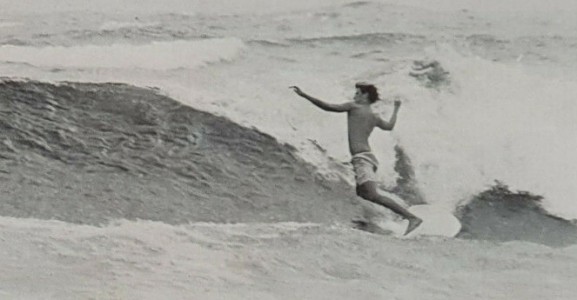 Hair flying, Rodney "The Gopher"' Sumpter shows his dexterity as he swings into a nice wall at Wattego's. |
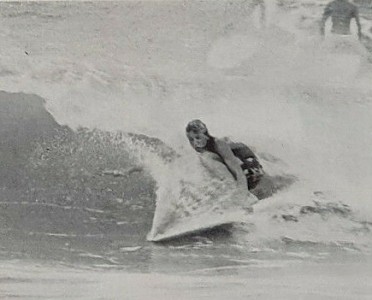 Robert
Young struggles to bring his board
inside this curl at Wattego's. |
| On the south side
of the Cape is Tallows Beach- suitable in theory
for a nor-easter but which seems in practice
seldom to develop into really good surf. At the extreme southern side of the Tallows, Broken Head supplies a really fine surf under southerly wind conditions. In such conditions a type of wave similar to the excellent North Narrabeen right-hander banks up and carries to the beach. Byron Bay under such wind conditions is a board riders paradise. However, I did find that some of the residents and officials of the sleepy township of Byron Bay aren't too eager to encourage any marked "invasion" by board riders. Some surfers have had their stay in Byron Bay abruptly curtailed, long hair has evidently become a dubious lawful reason for exclusion from the village. This intolerant attitude does little to deter the avid surfer who must rank this normally pleasant town and its surrounding beaches as one of the most exciting board and body surfs on the entire east coast. |
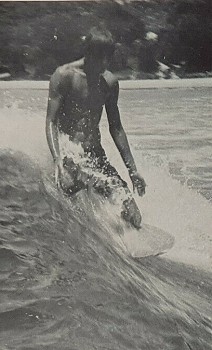 |
|
Page
9
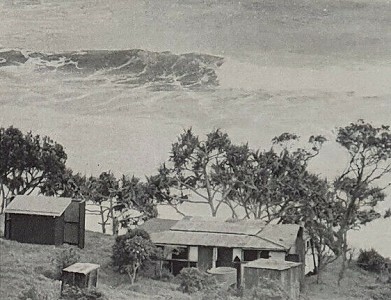 |
The
old "home" at Wattego's huddled among the
Pandanus Palms keeps an eye on some of our
greatest waves. |
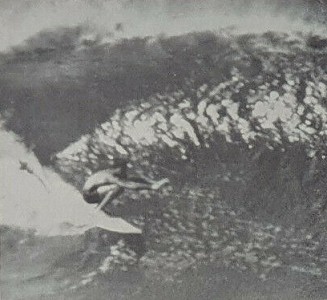 |
Haileiwa teenager Buzzy Kneubull goes through the hollow of the Pipeline. Midget
Farrelly, defying convention,
cuts back under a moderate wave, whipped right at the bottom and made a great ride. |
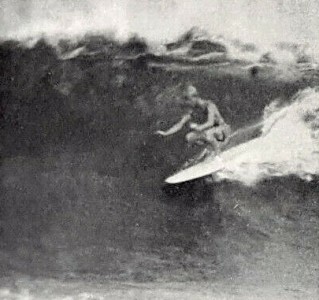 |
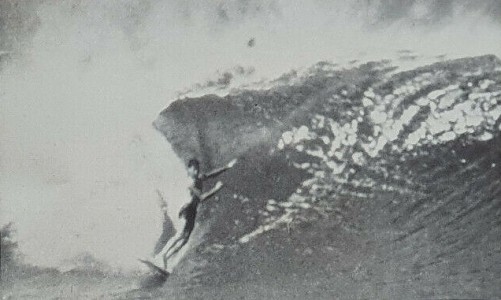 |
Veteran Island resident Jose Angel shows he hasn't lost the touch for a good right hander and slips through. John Peck,
the most successful Pipeline
surfer of the 1963 season. |
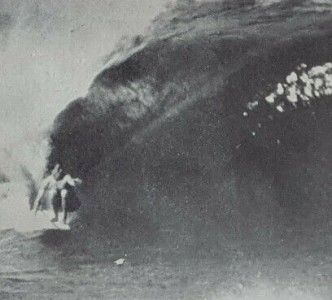 |
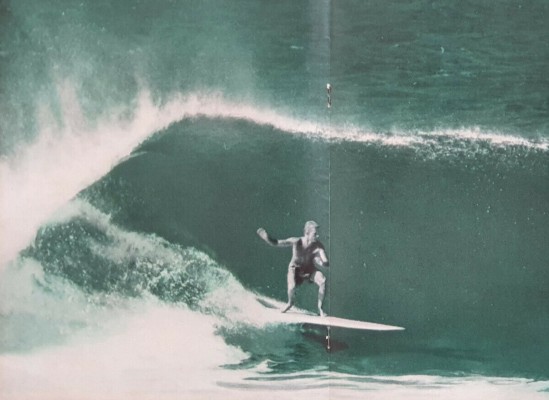 |
Form
of a champion The reining international board champion is quite a veteran in the tough surfing field despite the fact that he is 18 years old. At a real youngster Midget did quite a bit of travelling the world with his parents and lived for some time in Canada and new Zealand before his folks decided to settle in Sydney. Midget, christened Bernard, got his nick name almost automatically. As an 11-year old Bernard was a mighty small kid and his appearance "out the back" at either Manly or Freshie perched on a big hollow board in the middle of a decent hump led the board riders to give him a new name, a name that is now known throughout the surfing world. Midget was encouraged in his early surf life by his uncle, well known North Bondi board man, Ray Hookham. His almost fanatic keenness in becoming a great board rider saw him as a Junior line up with some of the best board men of the day. He was taken under their wing and was always ready to listen to advice and experiment and work on improving his technique. |
|
Kelly's
"Hydro"
EVERY year international board designers come up with some very slight change in board design. And while most of these changes certainly improve various aspects of board riding there has not been many radical change in overall design since the Malibu board hit the American market about ten years ago. However, on my Christmas trip to Hawaii I saw in action a completely new concept of the business end of the surfboard- the planing surface. From the experienced and fertile surfing mind of American John Kelly (known as the Old man of Black Point) has come this radical departure from present day boards - the hydroplane board. I brought one back with me and believe me the hydroplane has an amazing turn of speed, but it also has a very touchy turning ability that requires almost a complete change in board riding technique. Far from being a fanciful whim, the "hydro" is a product of long and detailed experimentation and a serious scientific approach to combining the speed of the "gun" with "hot dog" types of boards. |
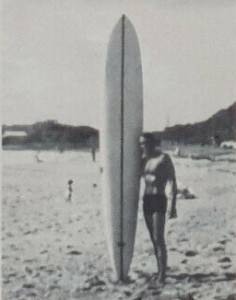 John Kelly and his "Hydro."
|
| Page 1 |
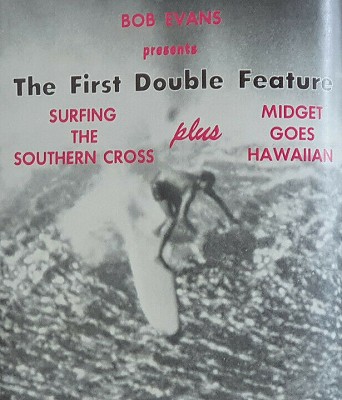 |
Page 2 |
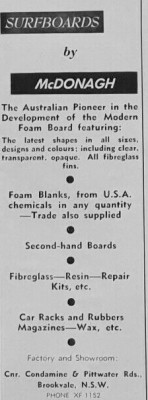 |
Page 36 |
 |
|
|
|
|
|
|